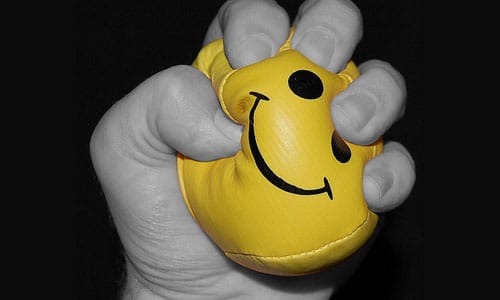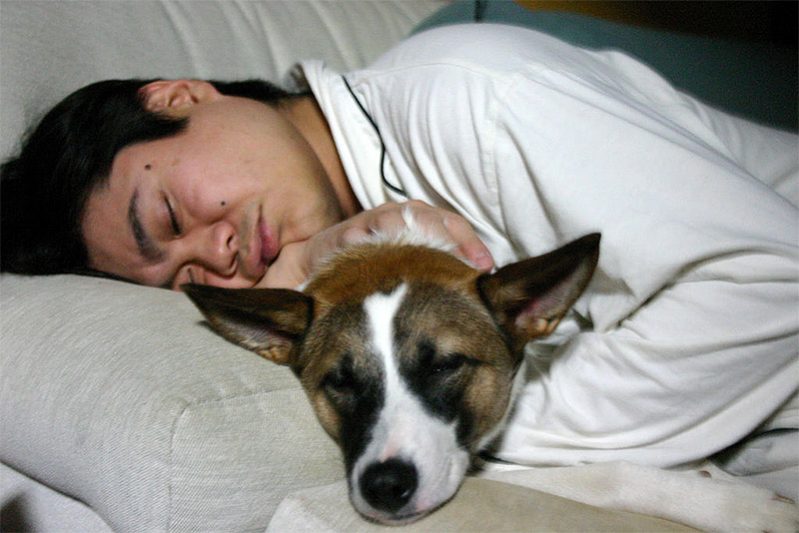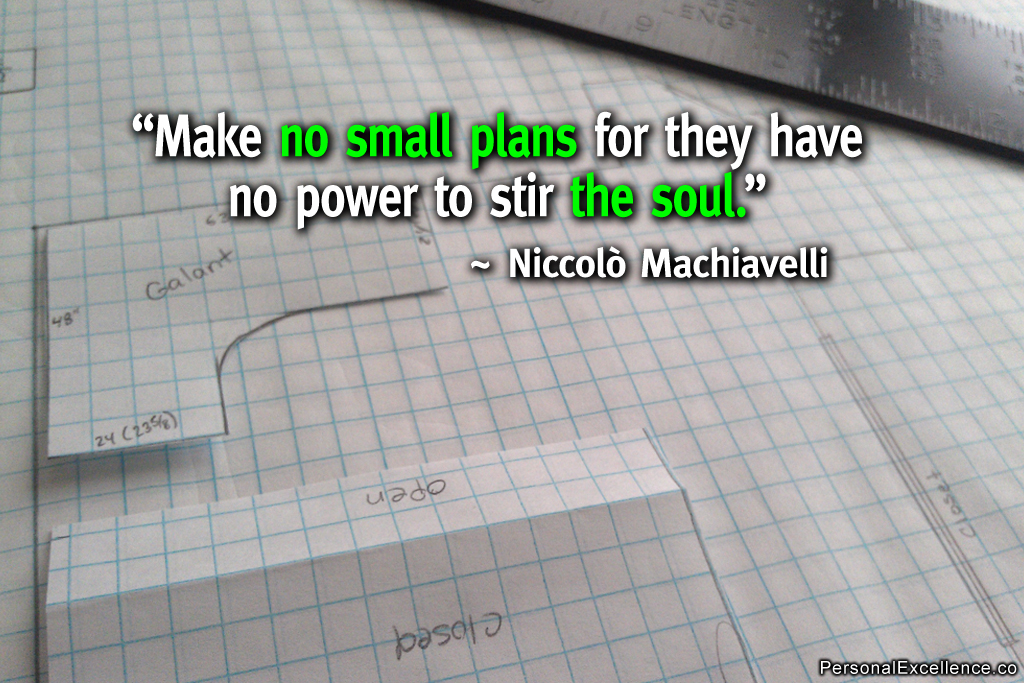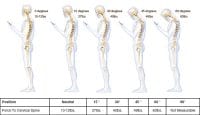This is part two of the two-part series on How To Get a Six Pack and a guest post by Alexander Heyne of Modern Health Monk. Read part one here: Cracking the Diet Code.

In the previous post, we talked about the “king” of sculpting your body: what you eat. What you eat will control the majority of the results you see (70%, 80%, 90% – pick one).
However, there are three other factors that will control the results you see: stress, sleep, and exercise. These are really important!
#1: Stress. Help! I’m Stuck In Traffic and I’m Going to Scream

The first part of this post revolves around one crazy important hormone: cortisol.
Cortisol is an adrenal hormone produced in the body due to stress and lack of sleep (among other things).
While ordinarily it’s fine to occasionally have that spurt of cortisol when you really need it in times of dire emergency, many of us today are exposed to cortisol day after day, which is incredibly damaging to the body, and more relevant to our article, can prevent fat loss.
Look at the long list of things cortisol does to you (via Stress.about.com):
- Weakens the immune system
- Can decrease bone density
- Can decrease muscle tissue
- Elevates blood pressure
- Increases the inflammation response in the body (bad!)
- Increases abdominal fat levels
And here are some of the things that elevate your cortisol, beyond the obvious (being stressed and lack of sleep) (Wiki):
- Sleep deprivation
- Overly long or intense exercise
- Burnout
- Severe trauma or stress
- Commuting (No joke! Researchers found that the longer the commute, the more cortisol released)
- Severe calorie restriction ( don’t starve yourself! )
So, we know that increased cortisol has a whole host of bad effects on our body and that includes increased levels of abdominal fat.
And we know that a few key things cause cortisol levels to spike: lack of sleep (we’ll talk about that next), stress, and commuting (hehe).
What you need to remember: Many modern people complain of people stressed all the time. Besides staying relaxed just because feeling stressed isn’t fun, it’s also worth staying relaxed to keep the belly fat away!
Celes has written a whole host of fantastic articles on stress, relaxation, meditation, etc. so don’t forget to check those out. I don’t need to go into any more detail on those:
Read more:
- How To Manage Work Stress [Manifesto]
- 10 Reasons You Should Meditate
- Increase Your Mental Clarity in 15 Minutes
#2: Sleep. What Has Sleep Got to Do with a Six Pack?

(Image: Joi)
Lack of sleep is another origin of excessive weight (and fat) gain.
Did you know that one night of missed sleep can make your body almost as insulin resistant as a diabetic?
In fact, in studies it’s been shown that people who sleep fewer hours are much more likely to have associations with type 2 diabetes.
There’s some other pretty interesting research linking lack of sleep to being overweight:
The first:
“Several large studies using nationally representative samples suggest that the obesity problem in the United States might have as one of its causes a corresponding decrease in the average number of hours that people are sleeping.The findings suggest that this might be happening because sleep deprivation could be disrupting hormones that regulate glucose metabolism and appetite.”
And another:
“Sleep loss is currently proposed to disturb endocrine regulation of energy homeostasis leading to weight gain and obesity. For instance, laboratory sleep deprivation studies in young men have demonstrated that one night of wakefulness (typically found e.g. in shift workers) exerts significant effects on the energy balance the next morning, including reduced energy expenditure, enhanced hedonic stimulus processing in the brain underlying the drive to consume food, and overeating that goes beyond satiety.
Further studies have shown that a reduction of sleep duration to 4 hours for two consecutive nights has recently been shown to decrease circulating leptin levels and to increase ghrelin levels, as well as self-reported hunger. Similar endocrine alterations have been shown to occur even after a single night of sleep restriction.”
Translation: Lack of sleep messes with our hunger hormones, increases our cravings for high calorie food, increases the chances of eating past full and has much more than a “little” bit of a correlation to being overweight.
Sleep is that important.
So, now that I’ve scared you into sleeping enough, let’s talk about exercise!
#3: Exercise. Everything You Need to Know about Exercise for Fat Loss

Everyone still with me?
Don’t let yourself get stressed and get enough sleep. :D
Okay, now exercise.
“How much exercise will I need to do?” people often ask.
Unfortunately, it’s virtually impossible for me to give you a straight answer because I don’t know where you’re coming from and what shape your body is currently in.
But I will give you the low-down on everything you need to know about exercise, in as few words as possible :)
Three Types of Exercise Programs to Consider
In my mind, there are three types of exercise programs most people are familiar with for weight/fat loss.
- HIIT – High intensity interval training
- Cardio – Running, Rowing, Swimming – Cardiovascular exercises
- Weight Lifting
Before we get into each of these, I’ll be honest and say that weight lifting is often more effective for weight loss than cardio.
Usually people think of running on a treadmill for two hours a day to lose weight – actually, lifting weights would be more effective — here’s why.
People usually just think of exercise in terms of calories burned during exercise. So they think they should be running on a treadmill because it burns more calories, and thus will make them skinnier.
But this neglects another important aspect: something called Exercise Post Oxygen Consumption (EPOC). EPOC is basically how oxygen starved your body is after the exercise and leads to a couple things: replenishment of fuel stores, cellular repair, muscle building, etc. after your workout.
Certain forms of exercise, like high intensity interval training and weight lifting, have high EPOC which means the body is still working hard afterwards. The degree of EPOC usually is positively related to how intense the exercise is. A higher EPOC, the more calories are burned when you’re not working out.
Following me?
Even though you may think lifting weights burns only 300 calories during your 20 minute workout, and your treadmill helps you burn 500 calories, if you lift weights, the greater EPOC effect will mean your body is still working hard when you’re not working out – which will have an overall greater effect than just the treadmill.
That’s why weight training is so valuable.
#1: HIIT – High Intensity Interval Training
High intensity interval training basically consists of alternating periods of maximal intensity work, followed by short rest periods.
A popular routine is called Tabata, where you alternate 20 second intense periods of exercise with 10 second rests, for a total of 8 sets.
I won’t go into much detail on HIIT in this post just because I consider it an advanced workout routine which isn’t suitable for everyone – especially if you’re a beginner, unfit or older.
#2: Cardiovascular Exercise
Cardiovascular exercise is what we typically think about after we’ve been eating too much around the holidays. We tell ourselves “Well, looks like it’s time to go hop on the treadmill!”
Cardiovascular exercise is fine for weight loss but research has shown that it tends to be a bit inferior to HIIT or weight training based on the time investment (but let’s face it, if you’re exercising away 400 calories and not eating more food to replace it, you’ll lose weight).
So which one do I choose?
Pick one you like! Today I’m just going to go into detail with weight training, because I view it as the most important and effective overall, and is the one I have the most experience with.
#3: Weight Training
I’m going to assume that everyone is a beginner here.
What I’m going to give you is a 4 day split routine – meaning each day you’ll have one or two body parts to train.
Since it’s a beginner routine, I’m going to include a combination of both body weight exercises and dumbbell (free weight) exercises.
Dumbbells are relatively cheap to purchase, can be used at home, and have a very low rate of injury (even if you mess up your form when doing an exercise). The good thing is that they allow your body to be subject to higher levels of stress which will stimulate the muscles to grow more.
As a general rule, include 5-10 minutes of warming up, and for whatever exercise you do first, do 10-15 reps with the lightest weight possible.
For this split routine, either do these workouts on each day of the week in a row (E.g. Monday, Tuesday, Wednesday, Thursday – Rest Fri/Sat/Sun) or leave a day of rest in-between each one (Monday/Wednesday/Friday/Monday)
Here it is:
Split day 1: Chest & Abs
Warmup: 5-10 minutes of light walking, jumping jacks, or jogging.
Chest
- Normal pushups or knee pushups (4 sets of as many as you can)
- Dumbbell chest press (4 sets of 8-12)
Abs
- Plank (shoot for 1 minute) (3 sets until you can’t anymore)
- Bicycles (3 sets until you can’t anymore)
Split day 2: Back & Shoulders
Warmup: 5-10 minutes of light walking, jumping jacks, or jogging.
Back:
- Pullup Negatives (3 sets of 6-12)
- Inverted Rows (3 sets of 8-12)
- Dumbbell Rows (3 sets of 8-12)
Shoulders:
- Standing overhead press (3 sets of 8-12)
- Outer shoulder rotations (3 sets of 8-12)
- Lateral Raises (3 sets of 8-12)
Split day 3: Arms
Warmup: 5-10 minutes of light walking, jumping jacks, or jogging.
Biceps:
- Bicep Curl (3 sets of 8-12)
- Hammer Curl (3 sets of 8-12)
Triceps:
- Tricep Kickbacks (3 sets of 8-12)
- Chair Tricep Dip (3 sets of 8-12)
Split day 4: Legs
Warmup: 5-10 minutes of light walking, jumping jacks, or jogging.
- Lunges (3 sets of 20 – if it’s too easy, hold dumbbells in each hand)
- Prison Squat (3 sets of 8-12 – hold a dumbbell in your arms if it’s too easy)
- Jump Squats (3 sets of 15+)
So that’s it! A four day split, where each workout will probably take about 30 minutes. There are some key things to remember though.
The Key To Transforming Your Physique With Weights
So the routine I gave above is very basic. It’s a combined body weight, dumbbell routine you can do at home.
There is just one important thing to remember: record your workouts, and make sure each week you are beating last week’s numbers.
So if you did a total of 55 pushups last week, this week you want to make sure you beat that number.
The key to getting rid of that belly fat is to make yourself increasingly stronger – which means you have to push yourself more and more each workout. When you progress each workout, doing more repetitions or more weight than last time, you’ll get stronger.
Progression, rest, and nutrition are the keys to seeing results.
When you lift weights, your diet becomes even more important because your body relies on adequate protein and rest in order to recover and get stronger.
So make sure nutrition is your priority.
FAQ
“How much sleep do I need?”
I’m not a sleep expert so I’ll give you a logical answer: sleep enough so that you aren’t tired throughout the day. For most people that’s probably at least 7 hours of sleep. But as far as I’m concerned – the more the better.
“When should I exercise?”
There are all kinds of studies breaking down what time during the day you should exercise, what foods to eat around your workouts, etc. but just keep it simple. Exercise when you can find the time to do so. For some people that’s early in the morning, and for others, that’s late at night.
“How many hours per week should I do this?”
The workouts I gave probably won’t take more than 30-40 minutes per workout, four days per week, and is an excellent foundation to build on.
“How much weight do I use to start?
Generally you want to stick to the eight to twelve (8-12) repetition range with weights. If you can do 12 repetitions easily, then add some weight. If you can’t do eight, use a lighter weight.
Take it from here and best of luck in achieving your six pack! :)
This is part two of the two-part series on How To Get a Six Pack. Read part one here: Cracking the Diet Code.
(Images: Guy with Six Pack, Stress Ball, Workout)
About the Author: Alexander Heyne writes at Modern Health Monk, a site that shows people how to reverse health problems caused by 21st century life.







 Thanks for reading. If you like my free articles, join my private email list and get my latest updates and articles sent right to your inbox.
Thanks for reading. If you like my free articles, join my private email list and get my latest updates and articles sent right to your inbox.